Elements of Remote Life
 May 26, 2021 • 2:18 PM UTC
May 26, 2021 • 2:18 PM UTC United States
United States 140x Magnification
140x Magnification Unknown
Unknown
ananya_goyal
Learn about the author...
1posts
0comments
1locations
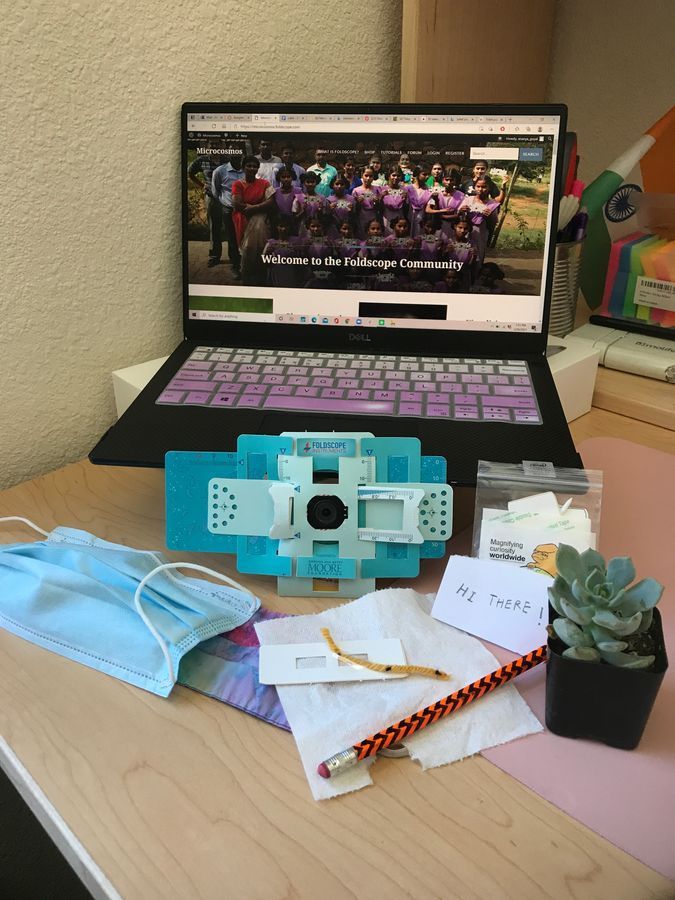
An exploration of quarantine hobbies and products
Introduction
2020 has been one big learning experience- for individuals all across the world and for us as a society. Amongst this whole pandemic, one of the many affected populations has been that of students and teachers. Getting valuable educational experiences over zoom, in a remote setting, has been a challenge. Now that we have crossed the one-year mark of the start of the COVID-19 pandemic, I feel like it is time for me to look back at how my life has changed personally, and I thought it would be interesting to do so on a microscopic level…
Before the pandemic, I never gave much thought to a lot of things that have become the prime symbols of COVID-19. Toilet paper, face masks, hand sanitizer, etc. are some of the most commonly used things now. Others that represent new quarantine hobbies such as knitting, gardening, art, etc. are less mainstream but just as popular. Therefore, I decided to theme my exploration into the microcosmos according to elements of my remote life here in California. Hope you have a fun time reading!
Introduction
2020 has been one big learning experience- for individuals all across the world and for us as a society. Amongst this whole pandemic, one of the many affected populations has been that of students and teachers. Getting valuable educational experiences over zoom, in a remote setting, has been a challenge. Now that we have crossed the one-year mark of the start of the COVID-19 pandemic, I feel like it is time for me to look back at how my life has changed personally, and I thought it would be interesting to do so on a microscopic level…
Before the pandemic, I never gave much thought to a lot of things that have become the prime symbols of COVID-19. Toilet paper, face masks, hand sanitizer, etc. are some of the most commonly used things now. Others that represent new quarantine hobbies such as knitting, gardening, art, etc. are less mainstream but just as popular. Therefore, I decided to theme my exploration into the microcosmos according to elements of my remote life here in California. Hope you have a fun time reading!

Here’s what the rest of the post will explore!
Background & Methods
Common elements of the pandemic
Masks have become the prime symbol and necessity of the COVID-19 pandemic. Everywhere you go, people are masked (and a lot of them are vaxxed now, too). I remember at the beginning of the pandemic, I started wearing homemade cloth masks that my roommate’s mom had made for us. It wasn’t until recently that I switched to surgical masks as I came closer to my vaccination appointment. I was curious why my mother had asked me to switch to surgical masks besides the obvious (they provide more air filtration); as I’m a visual learner, I wanted to see what exactly that meant. Therefore, I looked at two different masks- a surgical mask and a cotton cloth mask.
Background & Methods
Common elements of the pandemic
Masks have become the prime symbol and necessity of the COVID-19 pandemic. Everywhere you go, people are masked (and a lot of them are vaxxed now, too). I remember at the beginning of the pandemic, I started wearing homemade cloth masks that my roommate’s mom had made for us. It wasn’t until recently that I switched to surgical masks as I came closer to my vaccination appointment. I was curious why my mother had asked me to switch to surgical masks besides the obvious (they provide more air filtration); as I’m a visual learner, I wanted to see what exactly that meant. Therefore, I looked at two different masks- a surgical mask and a cotton cloth mask.
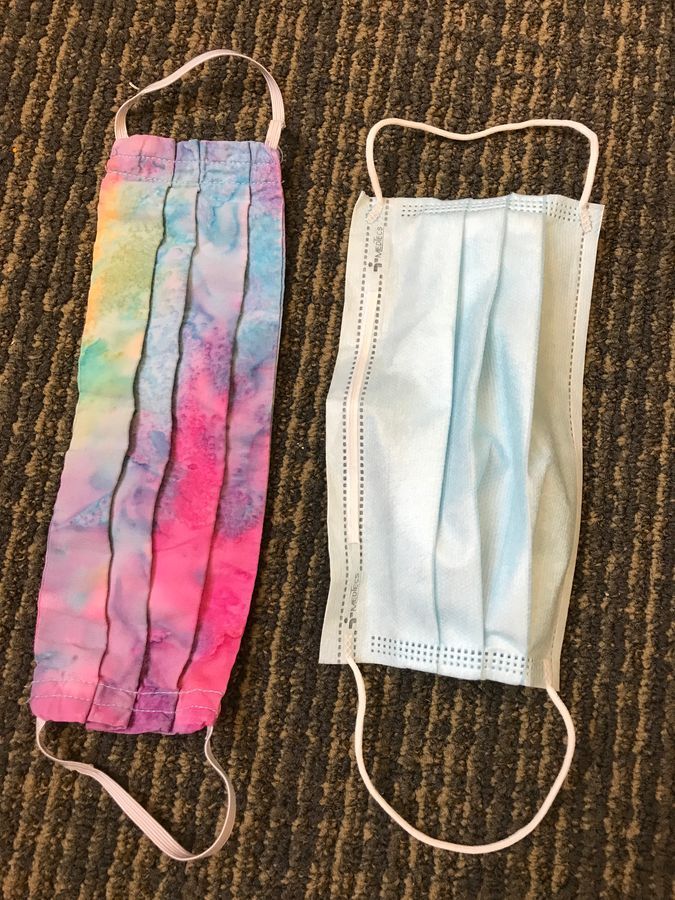
Which one is better?
Toilet paper is another one of those things that became super popular last March, owing to the surprising shortage of said product at most stores, including CostCo (which I hail as the leader in all consumer-related things). Given that we have now moved past this debilitating shortage, I also thought to figure out what exactly makes this one product so important to people- besides the obvious once again.
Toilet paper is another one of those things that became super popular last March, owing to the surprising shortage of said product at most stores, including CostCo (which I hail as the leader in all consumer-related things). Given that we have now moved past this debilitating shortage, I also thought to figure out what exactly makes this one product so important to people- besides the obvious once again.
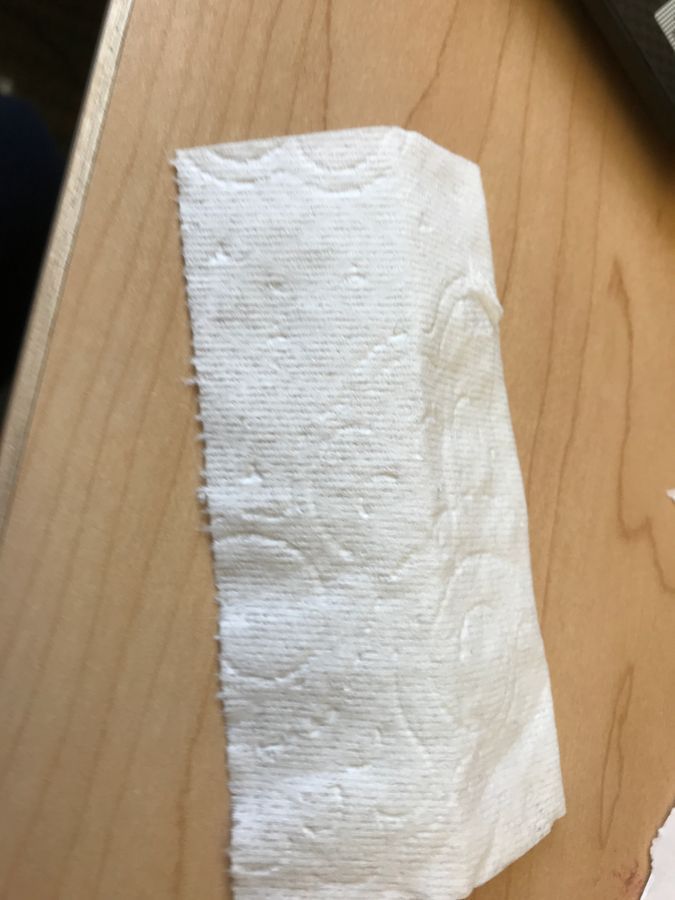
This alone could be worth hundreds of dollars one day…
Hobbies I have picked up
Owing to my heavily indoors lifestyle these past few months, it was only natural that I picked up some new hobbies (although the usefulness of such hobbies is currently at debate). Not only did I have a chance to return to some old classics (sketching), I also started knitting and gardening on the side. They are works in progress, but here I thought I might as well see what I signed up for in hindsight.
For sketching, I decided to look at pencil (graphite) marks on printer paper to see what writing looks like on a microscopic scale. Is it really more exciting than on a macros scale? I guess we shall see. For gardening, I picked up some of the soil in my newest succulent- I didn’t want to take chances with the succulent since I am still in the learning phase of plant caretaking. Finally, for the yarn , I took a strand from my mustard stack (that will one day become a sweater), so we shall see if it is actually going to be good at insulating…
Hobbies I have picked up
Owing to my heavily indoors lifestyle these past few months, it was only natural that I picked up some new hobbies (although the usefulness of such hobbies is currently at debate). Not only did I have a chance to return to some old classics (sketching), I also started knitting and gardening on the side. They are works in progress, but here I thought I might as well see what I signed up for in hindsight.
For sketching, I decided to look at pencil (graphite) marks on printer paper to see what writing looks like on a microscopic scale. Is it really more exciting than on a macros scale? I guess we shall see. For gardening, I picked up some of the soil in my newest succulent- I didn’t want to take chances with the succulent since I am still in the learning phase of plant caretaking. Finally, for the yarn , I took a strand from my mustard stack (that will one day become a sweater), so we shall see if it is actually going to be good at insulating…
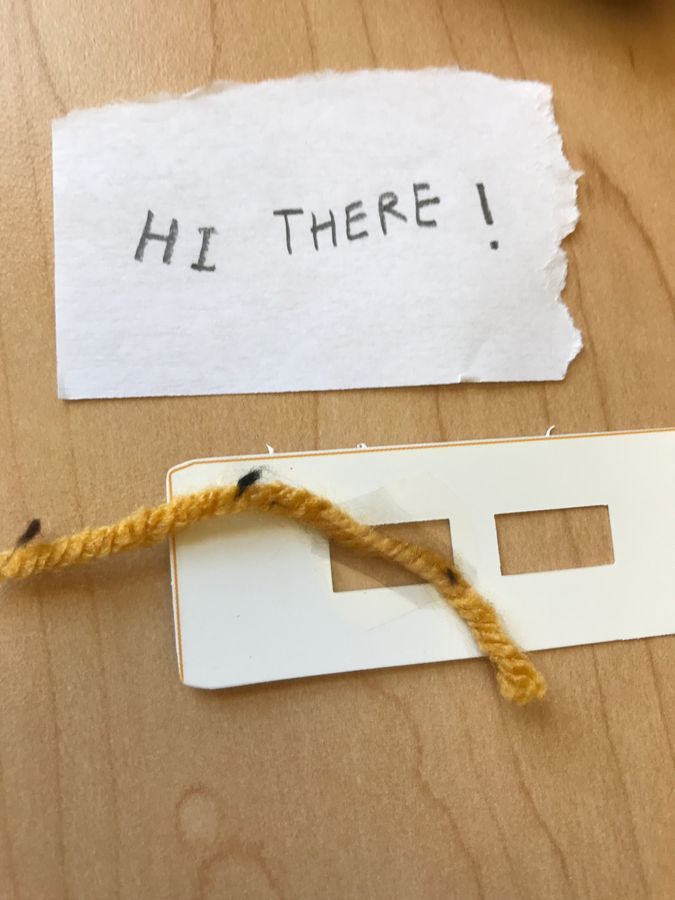
Pencil on paper, yarn
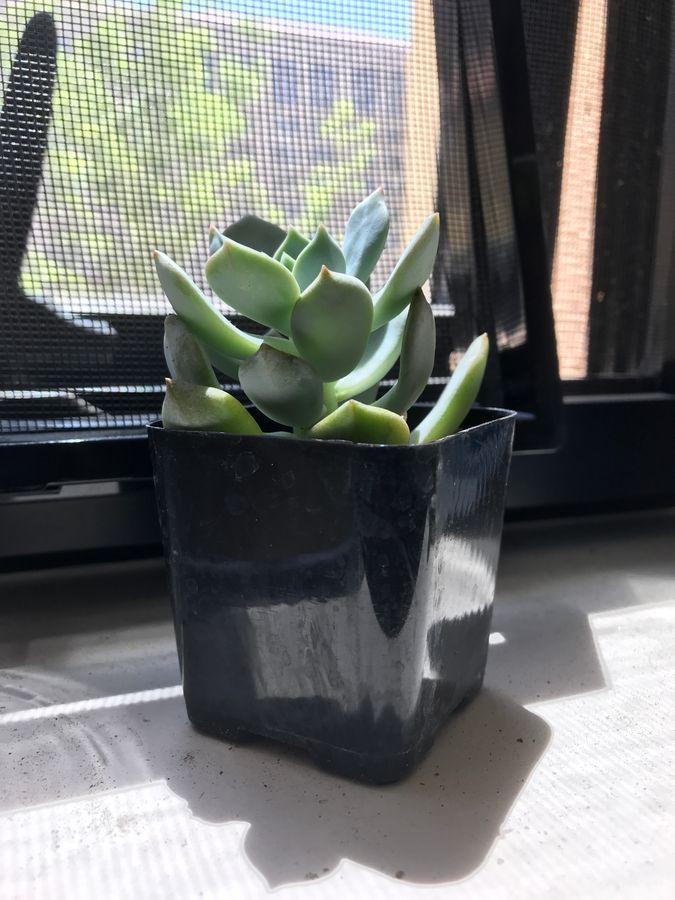
My newest plant! All the above experiments were performed using a Foldscope that had been assembled as instructed, and using some of the plastic slides included in the starter pack. Given the macro scale of many elements, they were just directly put under the microscope.
Results
The debate between masks- surgical vs cloth
It can be seen that the first two photos of the surgical mask show that they tend to have a mesh like appearance on the microscopic scale- that is, their fibers are randomly aligned with purposeful holes left in between the fibers for air flow. This shows that the surgical masks, while allowing air to pass through only specific bubbles, are great at constricting the air flow at other locations on the mask.
Results
The debate between masks- surgical vs cloth
It can be seen that the first two photos of the surgical mask show that they tend to have a mesh like appearance on the microscopic scale- that is, their fibers are randomly aligned with purposeful holes left in between the fibers for air flow. This shows that the surgical masks, while allowing air to pass through only specific bubbles, are great at constricting the air flow at other locations on the mask.
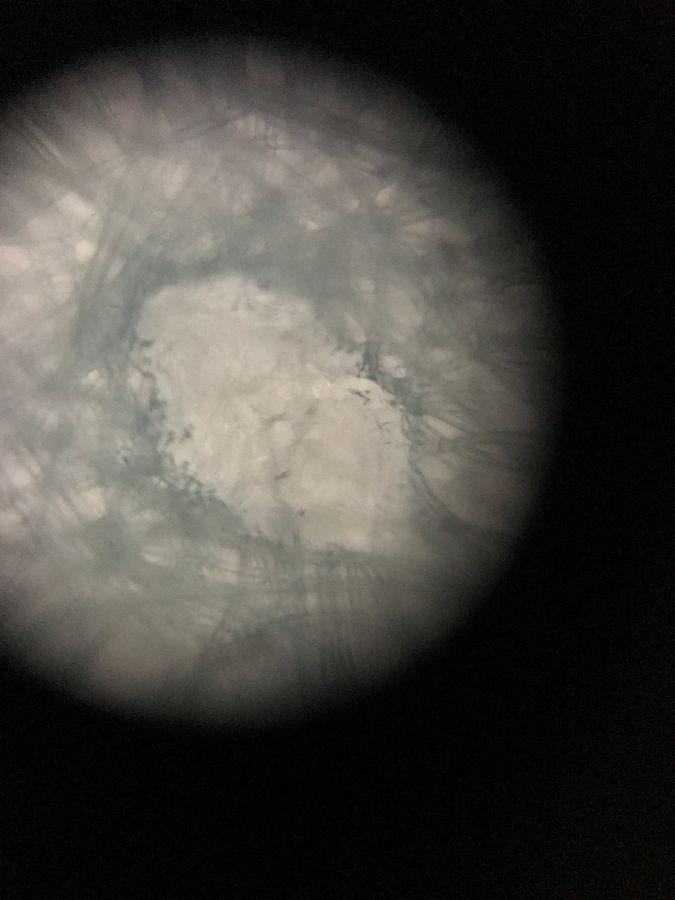
Surgical masks microstructure
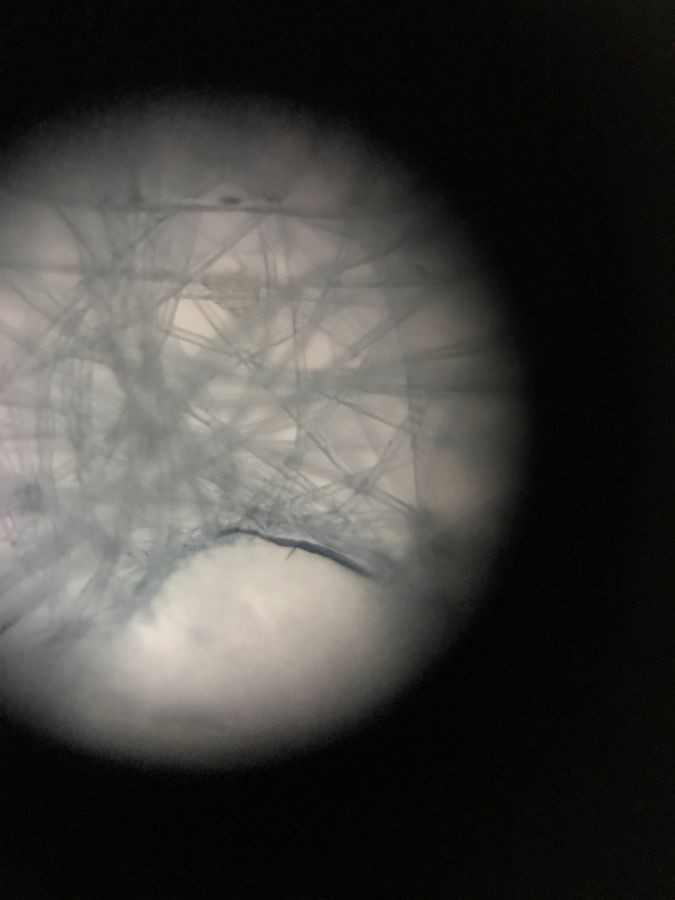
Contrarily, the cotton cloth mask shown in red and blue, has a more structured appearance with patterned holes in between the fibers. These fibers are aligned orthogonal to each other, thereby creating a boxed hole appearance that lets more air pass through the mask. There is no barrier between a person’s mouth and nose and the air beyond the mask, thereby making cloth masks not the best for preventing viruses/ dust/ other particles from flowing through.
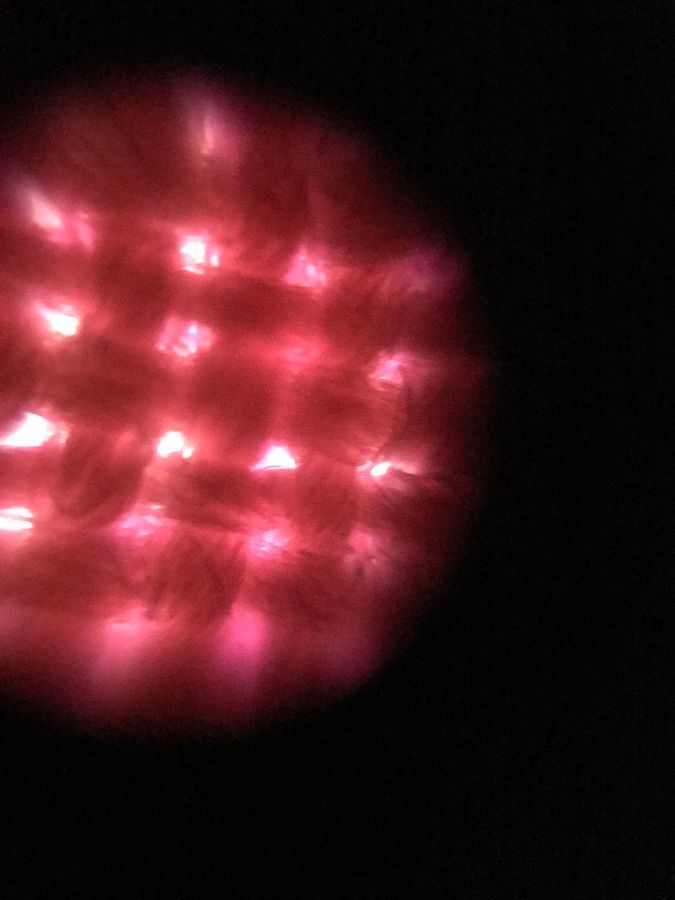
Cotton cloth mask microstructure
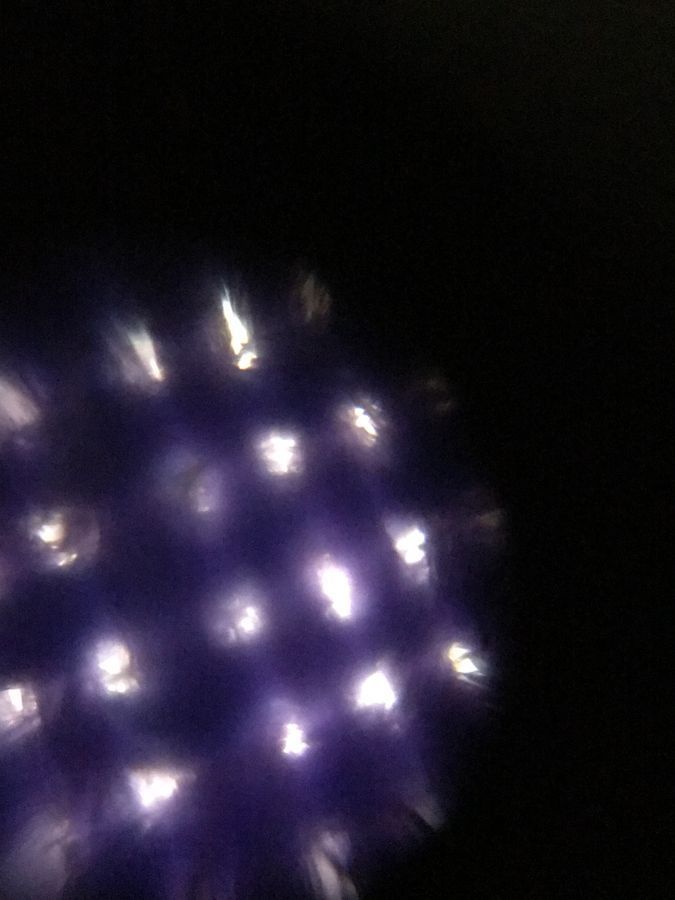
These images ultimately show that surgical masks are evidently better at constricting air flow (and passage of foreign particulate matter) than cloth masks. This means that if you are debating between the two, it is better to be on the safer side and wear surgical masks!
Toilet paper- is it really worth it?
The particular kind of toilet paper I buy has the following microstructure- it looks like it is made from multiple short fibers bunched together in groups (not as one whole unit). This makes sense given the use scenario for toilet paper, which requires it to get decomposed and break down when flushed.
Compared to other tissues and paper types, the fibers are short- but this will vary based on the properties of toilet paper itself. Things like number of plies, size, weight, roughness, softness, chemical residue, etc. will change the structure accordingly. Since I only had one type of paper (do people have more?), I only had this one sample to show. Feel free to buy multiple and explore on your own though!
Toilet paper- is it really worth it?
The particular kind of toilet paper I buy has the following microstructure- it looks like it is made from multiple short fibers bunched together in groups (not as one whole unit). This makes sense given the use scenario for toilet paper, which requires it to get decomposed and break down when flushed.
Compared to other tissues and paper types, the fibers are short- but this will vary based on the properties of toilet paper itself. Things like number of plies, size, weight, roughness, softness, chemical residue, etc. will change the structure accordingly. Since I only had one type of paper (do people have more?), I only had this one sample to show. Feel free to buy multiple and explore on your own though!
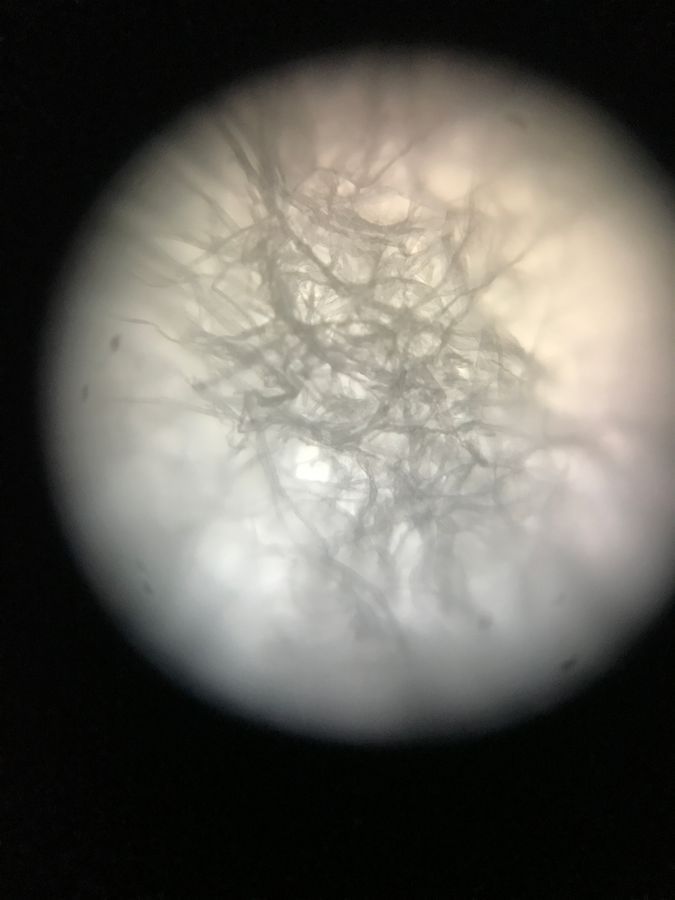
Toilet paper looks like this?
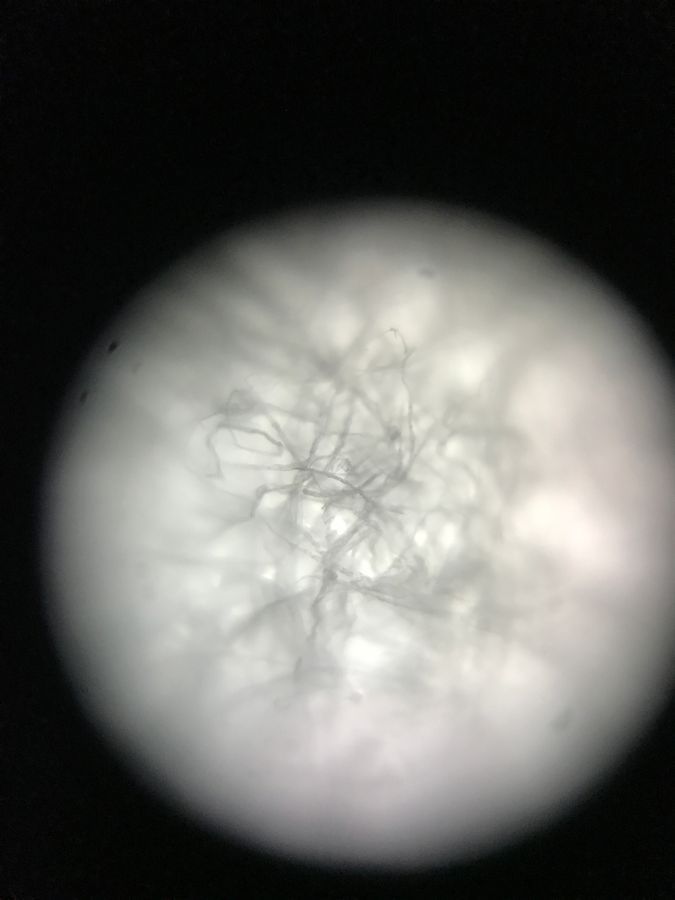
Toilet paper is definitely worth it, regardless of this project- so no questions there. What kind of toilet paper you buy will determine the microstructure and material properties though…
Writing/ sketching- the original way
I wrote the words ‘Hi there’ on a printer paper sheet, and saw what true art really is! This was honestly the most unexpected result I saw in my project- it is super aesthetically pleasing. Below it seems like the graphite is actually leaving particulate matter in a randomized line pattern, which makes sense given that a pencil works on the principles of gravity and friction. Each stroke of the pencil leaves behind graphite on the paper, giving the appearance of chipping off microscopic pieces of graphite each time you write.
Writing/ sketching- the original way
I wrote the words ‘Hi there’ on a printer paper sheet, and saw what true art really is! This was honestly the most unexpected result I saw in my project- it is super aesthetically pleasing. Below it seems like the graphite is actually leaving particulate matter in a randomized line pattern, which makes sense given that a pencil works on the principles of gravity and friction. Each stroke of the pencil leaves behind graphite on the paper, giving the appearance of chipping off microscopic pieces of graphite each time you write.
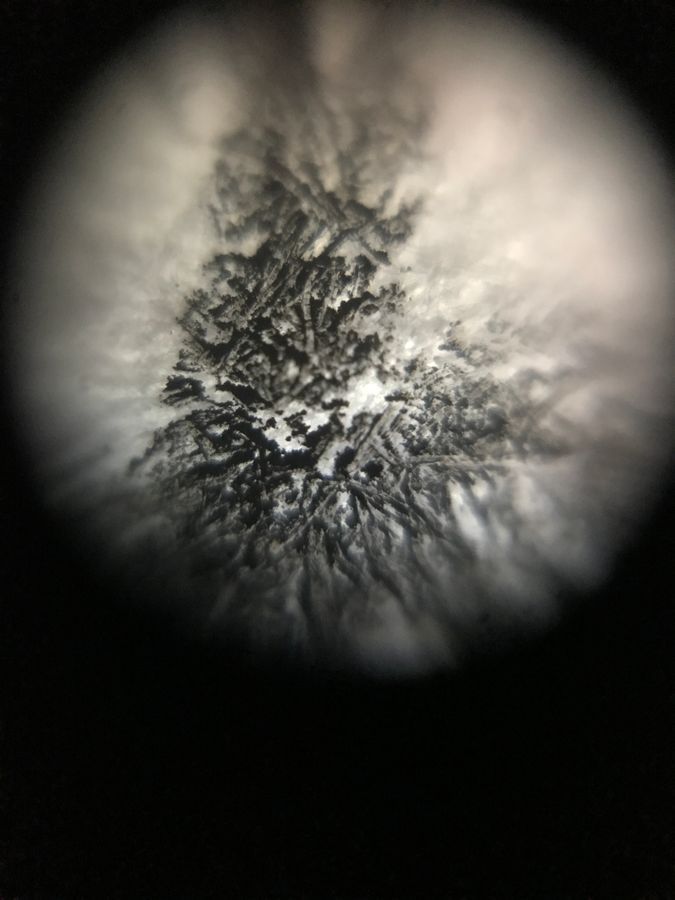
Pencil on paper- we are going back to the olden days…
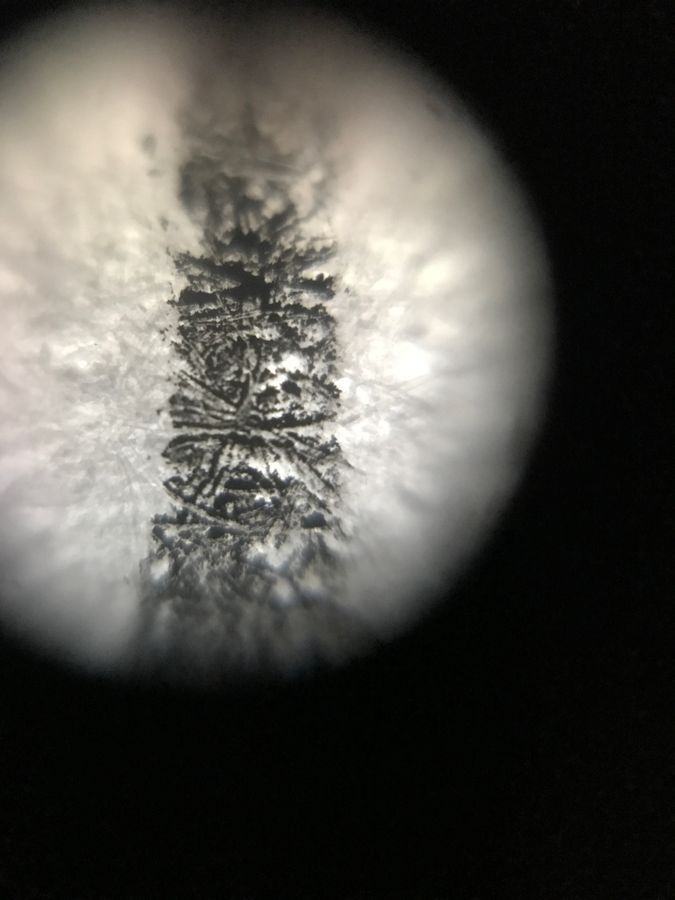
Overall, I really enjoyed doing this part of the experiment- and now I know that every time I do some not-so-aesthetically pleasing derivatives on paper, somewhere, some microscopic being is enjoying the piece of art it truly is…
Soil- not much or is there?
I wasn’t sure what to really expect from soil, since I don’t usually go around checking out soil samples. But, I guess the random distribution of ‘things’ below is to be expected. Taking an educated guess, I would say this soil not only includes pieces of dirt/ soil particles, but also includes not so visible living organisms. This means that I should definitely clean my window pane lest I accidentally grow a colony of parasites in my apartment.
Soil- not much or is there?
I wasn’t sure what to really expect from soil, since I don’t usually go around checking out soil samples. But, I guess the random distribution of ‘things’ below is to be expected. Taking an educated guess, I would say this soil not only includes pieces of dirt/ soil particles, but also includes not so visible living organisms. This means that I should definitely clean my window pane lest I accidentally grow a colony of parasites in my apartment.
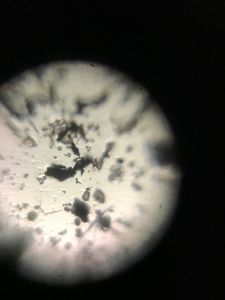
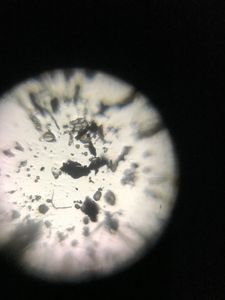
But the soil was really interesting to see, especially since I could see soil particles and living bacteria in there. Hopefully this soil proves to be a good environment for my plant!
Yarn- will I be warm come November?
The yarn, similar to most synthetic materials, has a thread-like structure where small threads are combined to form one big thread. Also the orientation of fibers with respect to each other creates a randomized distribution, and the inherent insulating properties of the tweed yarn make it a warm material. It was interesting to see how some of the microscopic strands show up as almost transparent, as that speaks to the material properties of the fibers themselves.
Yarn- will I be warm come November?
The yarn, similar to most synthetic materials, has a thread-like structure where small threads are combined to form one big thread. Also the orientation of fibers with respect to each other creates a randomized distribution, and the inherent insulating properties of the tweed yarn make it a warm material. It was interesting to see how some of the microscopic strands show up as almost transparent, as that speaks to the material properties of the fibers themselves.
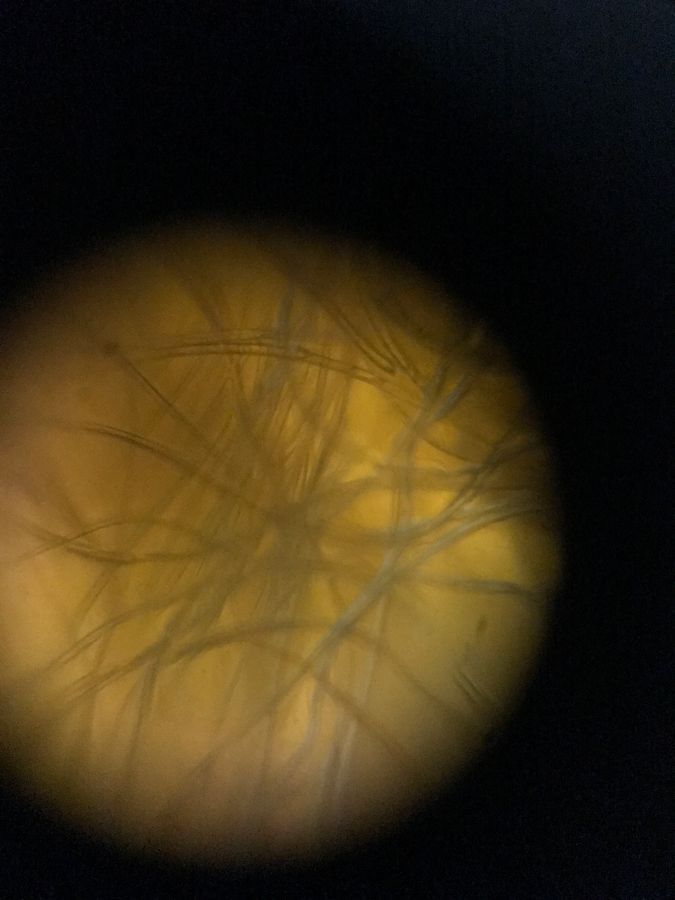
My yarn is yellow and fibrous!
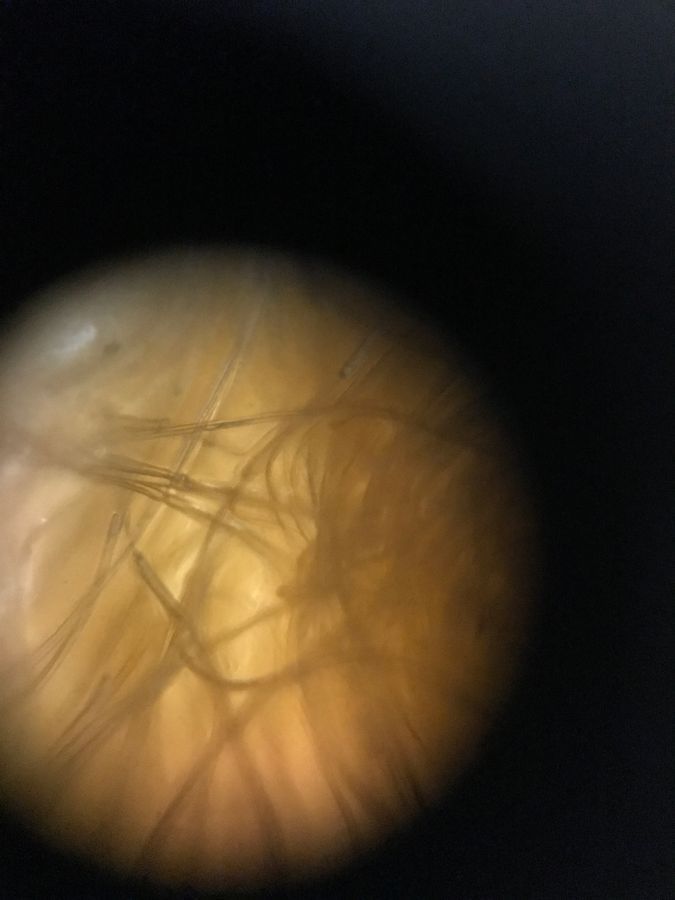
The short answer in the end is yes! This is good quality insulated yarn so I will definitely be warm in California winters in November. Just in case you were concerned about the weather here, all you need is a sweater made from this very yarn.
Conclusion
Surgical masks tend to have a more randomly oriented structure due to random fiber alignment, with specific spaces in between for air passage. This makes them better for preventing air flow than cotton cloth masks, which have more holes comparatively and don’t stop as much particulate matter from flowing through.
Toilet paper is definitely worth the money since it is an essential commodity. It has short fibers bunched together in groups to allow for rapid decomposition, and it’s microstructure depends on the type of paper you buy.
Graphite on paper is super aesthetically pleasing, and I will definitely do it again. Each letter sees graphite being left behind on the paper, as if chipped by the process of writing.
The soil sample saw not only soil particles (woo) but also other random debris and living things. We are excited to see how the succulent fairs now…
The yarn was very yellow and had a lot of small fibers combining to form one long fiber- and it is insulating! Therefore, a great material for a future sweater, if I do say so myself.
Hope you all enjoyed reading this- happy microscopic explorations!
Conclusion
Surgical masks tend to have a more randomly oriented structure due to random fiber alignment, with specific spaces in between for air passage. This makes them better for preventing air flow than cotton cloth masks, which have more holes comparatively and don’t stop as much particulate matter from flowing through.
Toilet paper is definitely worth the money since it is an essential commodity. It has short fibers bunched together in groups to allow for rapid decomposition, and it’s microstructure depends on the type of paper you buy.
Graphite on paper is super aesthetically pleasing, and I will definitely do it again. Each letter sees graphite being left behind on the paper, as if chipped by the process of writing.
The soil sample saw not only soil particles (woo) but also other random debris and living things. We are excited to see how the succulent fairs now…
The yarn was very yellow and had a lot of small fibers combining to form one long fiber- and it is insulating! Therefore, a great material for a future sweater, if I do say so myself.
Hope you all enjoyed reading this- happy microscopic explorations!
Sign in to commentNobody has commented yet... Share your thoughts with the author and start the discussion!
More Posts from ananya_goyal
No more posts from this author.